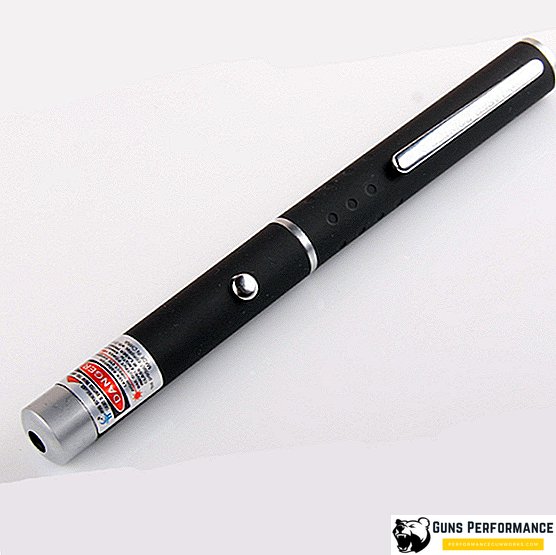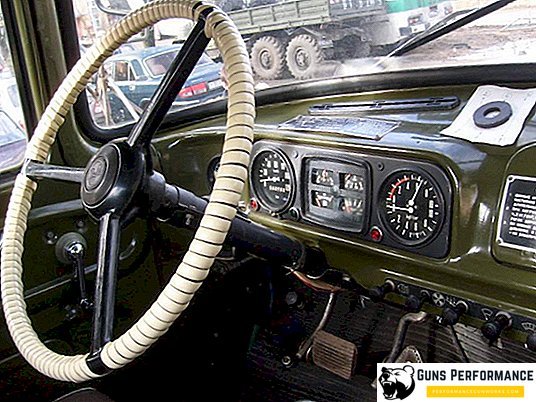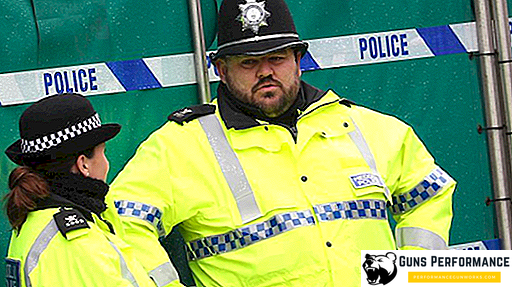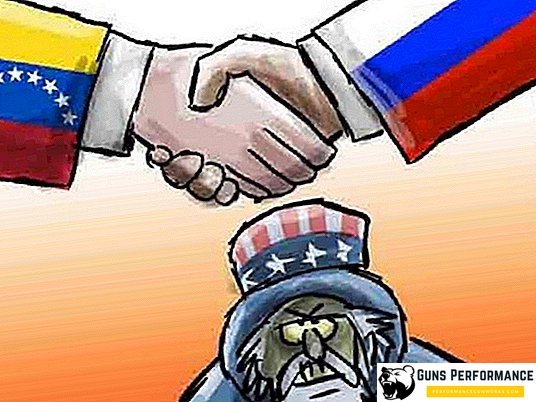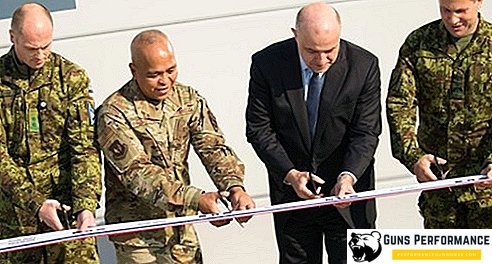Tank KV is the same symbol of victory in World War II, like the legendary "thirty-four." In addition, this tank is a turning point and an important milestone in the development of domestic tank construction, and the world one too. KV became a stage in the formation of the famous Leningrad school of tank building, which throughout its history has created many excellent cars. Many design solutions applied to modifications of the KV tank were applied in later Soviet machines.

The history of the creation of the KV tank began at the end of 1938 with the decision of the USSR Defense Committee, which instructed the design bureau of the Leningrad Kirov factory to build a heavy tank, with anti-bullet armor and powerful weapons. The Kirov Plant was not the only enterprise that worked on the creation of a heavy tank for the Red Army. In the same Leningrad, a similar task was given to plant number 185. In general, it should be noted that at that time the idea of building a powerful tank with anti-rig booking was in the air, and the leadership of the USSR was well aware of the need to create such a machine.

In the middle and at the end of the 30s, multi-turreted tanks were "in vogue". It was believed that by installing a lot of towers on a tank, you can seriously increase its combat power. According to this scheme, the T-28 and T-35 were mass-produced in the USSR, the PzKpfw NbFz V was created in Germany, and the Vickers "Independent" in England. This share and perspective heavy tanks did not pass. Initially, the future KV was supposed to be made according to a multi-tower scheme and install three towers. At the stage of drawings, this tank was called SMK (SM Kirov). At the same time, a group of young specialists working at the Kirov Plant created a heavy single-turbo diesel tank based on SCM. The tank was very successful and at the end of 1939 was adopted by the Red Army. The new car received the proud name of KV (Klim Voroshilov).

Characteristics of the tank
The Soviet KV-1 tank had a classic layout. The control compartment was in the front edge of the vehicle, followed by the fighting compartment, then the engine compartment and the transmission compartment. The crew of the KV-1 tank consisted of five people: the tank commander, driver, gunner, loader and radio operator-gunner.
The hull of the tank consisted of rolled armor, the thickness of which reached 75 mm. The tank was armed with a 76-mm cannon. Initially, the L-11 gun was installed on the car, then the F-32, and after several months of war - a ZIS-5 gun. Also, the tank had several machine guns: paired, course and aft. On some machines installed anti-aircraft machine gun. The KV-1 had a 600 hp diesel engine. The tank weight was 47.5 tons. Below are brief technical specifications of the tank.
Total information | ||
| Crew | 5 | |
| Length mm | 6675 | |
| Width, mm | 3320 | |
| Height mm | 2710 | |
| Clearance, mm | 450 | |
| Reservation / tilt angle, mm / degree: | ||
| forehead (top sheet) | 75/30 | |
| hull board | 75/0 | |
| feed (top sheet) | 60/50 | |
| forehead tower | 75/20 | |
| gun mask | 90 | |
| Speed km / h: | ||
| average on the roads | 25 | |
| Maximum | 34 | |
| Power reserve, km | 225 | |
Armament | ||
| Tool | gun L-11 / F-32 / F-34 | |
| Caliber, mm | 76 | |
| Ammunition, shells L-11 / F-32, ZIS-5, | 111/114 | |
| Machine guns | DT | |
| Quantity, pcs | 4 | |
Power point | ||
| Engine | diesel V-2K, V-shaped | |
| Number of cylinders | 12 | |
| Power, hp | 600 | |
| Fuel used | diesel diesel fuel, gas oil brand "E" | |
| Capacity of tanks, l: | 600-615 | |
Transmission | ||
| Main clutch | multidisc, dry | |
Gearbox | ||
| Type of | three-way, with a transverse shaft arrangement | |
| Number of gears, forward / backward | 5/1 | |
Immediately after the creation of the tank, the KV-1 was supposed to go to the test, but it turned out otherwise. It was at this time that the Soviet-Finnish war began and the car was sent to the front instead of a test site. Together with KV, T-100 and QMS were sent to the Karelian Isthmus. As part of the 20th Tank Brigade, experimental vehicles entered the battle and took part in the storming of the Mannerheim Line. The QMS was blown up by a land mine, and the HF showed itself from the best side and received laudatory reviews. However, it turned out that the 76-mm cannon is not suitable for the destruction of long-term fortifications.

In 1941, they planned to release several hundred units of the KV-1, as well as the KV-2 (a tank with a 152-mm howitzer installed on it) and the KV-3 tank, which had even thicker armor and more weight. Drawings of even heavier cars appeared. KV assembly took place at several plants. At the same time, no one was engaged in the refinement of the weak points of the KV-1, but there were enough of them: an unsuccessful gearbox, an unsuitable air filter, and a poor view from the tank. Well, gigantomania and the pursuit of quantity at the expense of quality, will play a cruel joke with Soviet gunsmiths more than once.
Tank KV-1 in the Great Patriotic War
Quite a large number of KV-1 tanks were in service with parts of the western districts, so these vehicles entered the battle from the very first day of the war. The Russian tank caused a real shock to the Nazis, nothing like the Wehrmacht at that time was not. The armor of the Russian KV-1 was not taken by any anti-tank gun of the Germans, not a single German tank could do anything with the Russian giant. To cope with the KV-1 could only 88-mm anti-aircraft gun, which the Nazis often used as an anti-tank gun.

At the end of 41 years, the main assembly of KV tanks was transferred to the Chelyabinsk Tractor Plant.
But most of the losses of these tanks at the beginning of the war accounted for precisely in damage and malfunction. Crews simply threw their tanks and left. The weak points of the KV-1 were in the first place: the poor quality of components and assemblies, poor visibility from the tank, unsuccessful gearbox and especially many complaints about the air filter. Tankers often could not get to the battlefield. But even more depressing was the picture of the preparation of tank crews. Tankers had almost no experience driving their tanks.
Well-trained tankers, who know the characteristics of their car, performed real feats on them. For example, a tank company (5 cars), Lieutenant Kolobanov, in an hour destroyed 22 enemy tanks without incurring any losses. Russian tank crews on the KV often simply crushed German tanks, and there are many descriptions of such exploits, both in Soviet and in German documents.

Tank flaws and attempts to eliminate them
But if we talk about the shortcomings of the KV-1 tank, the main one is not the engine and not the air filter. This tank was just not needed. At the beginning of the war he had no worthy opponents. Not a single German anti-tank gun or tank penetrated his armor, but neither did they take the T-34 armor. A howitzer or 88-mm anti-aircraft gun easily disabled both tanks. Both the KV and the T-34 were armed with the same 76 mm cannons, but at the same time, the T-34 was more mobile and cheaper. The KV-1 tank is a huge slow tank, which moved across rough terrain not much faster than a pedestrian, so it was easier to get into it than in the T-34.
That was until 43, when the Germans began to mass-produce "Tigers" and "Panthers". At this point, the KV-1 tank is instantly outdated. Long-barreled guns of German tanks pierced HF armor at such distances at which the gun of the latter did not threaten the enemy. You can also add the fact that the KV tank was able to "kill" any road, as few as the bridge could bear the weight of this giant.

In 1942, the KV-1S (high-speed) was released. It was made in the same way. This tank reduced armor protection, thereby reducing the weight of the car, and eliminated some of the problems of the KV-1. The running gear of the car has been improved, the review is improved, there are less problems with a transmission. The speed characteristics of the tank are better. In 1943 another modification of the tank, the KV-85, armed with an 85-mm cannon, was released. But they only managed to release this car in a small series (less than 150 pieces) and it did not play an important role in the history of the war.
Video about KV-1
From 1940 to 1944, 4,775 KV tanks of various modifications were launched. These machines played an important role, especially in the initial phase of the war. Unfortunately, this tank went into a series without eliminating the defects that were detected at the stage of factory testing. In the war for these defects had to pay in blood. On the basis of the KV tank, a heavy IS tank was created, which became a more sophisticated machine and could withstand the German Tigers and Panthers on equal terms.





